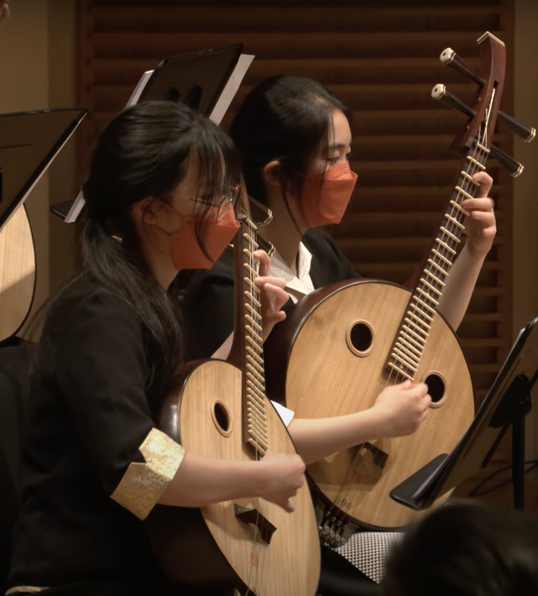Video/Audio Recordings
The cavalry
"The Cavalry" is an erhu solo piece composed by Tong Leung-tak. At the time of composition in 1965, Tong was presumably living with soldiers stationed in Tibet, a province at the frontier of the People's Republic of China. Some of the piece's musical features, especially the minor pentatonic mode, are often attributed to Tibetan folk music. The score in the archive in Music Office illustrates a version of the piece that includes an accompanying ensemble of yangqin, pipa, zhongruan, cello, and da gehu (aka diyin gehu). In a style not unlike Huang Haihuai's Saima ("Horse Racing"), the melody alternates between dense semiquaver passages and song-like phrases, while accompanying instruments offer static chordal support. The piece also features erhu bowing techniques such as the gallop-like paogong (comparable to "ricochet" for Western string instruments) and the imitation of horse neighing using a sustained high pitch.
Battle against the Tai Hang Mountain : Tai Hang's children : Erhu and orchestra
Based on excerpts from the score Wang Liping (1941–) composed for the 1971 documentary film Hong qi qu ("The Red Flag Canal"), "Battle Against the Tai Hang Mountain"-also known as "Tai Hang's Children"-is a piece for solo erhu with the modern Chinese orchestra. It was first arranged in 1975 by Tong Leung-tak (with revision completed in 1978) as a piece consisting of four named segments: qushui benliu ("water splashing through the canal"), kuchou beifen ("bitter vengeance and indignation"), yishan zaotian ("moving mountains and creating farmlands"), and rending shengtian ("humans shall prevail"). Musically, the piece modulates three times and calls for a full Chinese orchestra with a robust percussion section. The second segment of the piece in particular is notable for a solo erhu playing a slow, lamenting passage against a sparse accompanying backdrop. However the piece refers specifically to the story of the people of Lin county (now Linzhou city) who built an irrigation canal on a rough terrain across the Taihang mountains. It is sometimes confused with the song Taihang ernü xuedazhai ("The Children of the Taihang Mountains Learn from Dazhai in Agriculture"), which tells a similar story but focuses on Dazhai-located in the western region of the Taihang Mountains-being a commune officially acclaimed for its agricultural development during the first half of the 1960s. The score of SC453 is especially prepared for this project's recording based on the extant instrumental parts whereas SC453a is an earlier version probably prepared by Mr. Tong himself, which is however slightly different from the extant parts.
Partitura for Battle against the Tai Hang Mountain : Tai Hang's children : Erhu and orchestra
Happy Spring Evening
Based on traditional pipa solo piece Xiyang xiaogu, Tong Leung-tak arranged "Xunyang Nocturne" and "Happy Spring Evening" in 1979 and 1989 respectively. Music at Sunset portrays the gorgeous scenery of Jiangnan area. In 1895, pipa master Li Fangyuan included Xiyang xiaogu in his anthology of pipa scores and renamed the piece as Xunyang pipa. In 1925, Liu Yaozhang and Zheng Jinwen from the Great Unity Music Society in Shanghai arranged Xiyang xiaogu as Chunjiang huayue ye for the modern Chinese orchestra. Tong's "Xunyang Nocturne" is written for a small ensemble with twelve instruments. Led by pipa and xiao, this version showcases a heterophonic texture that alludes to Jiangnan "silk and bamboo" music. His "Happy Spring Evening" is rather an arrangement for the modern Chinese orchestra consisting of ten sections of theme and variations.


